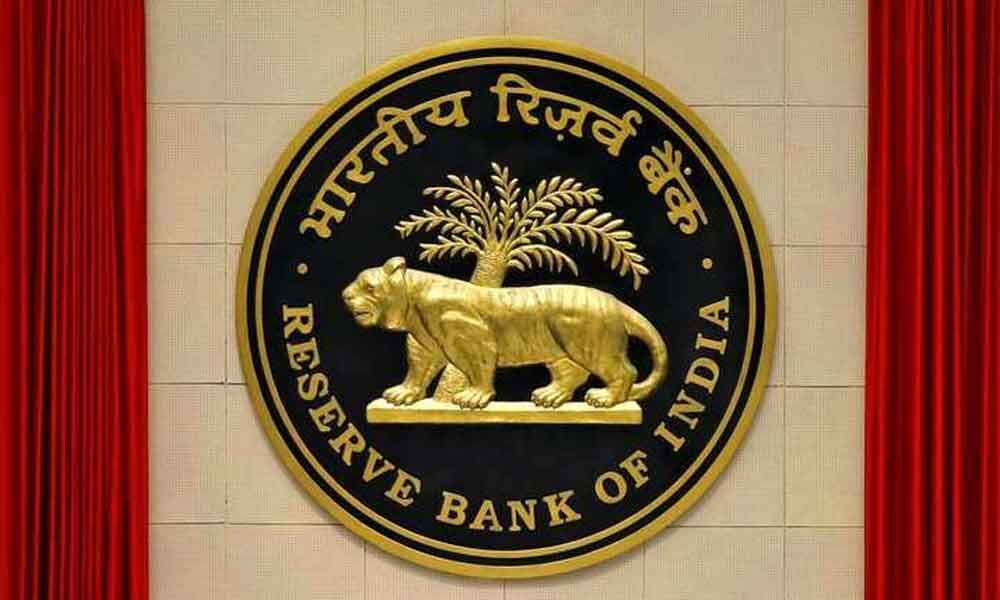Live
- They always want me to win, and now I feel lucky to have been offered a story like ‘Zebra’: Satyadev Kancharana
- ‘Democracy first, humanity first’: PM Modi in Guyana's parliament on two countries' similarities
- PKL Season 11: Telugu Titans register third straight win to top standings
- Is Pollution Contributing to Your COPD?
- NASA Unveils Underwater Robots for Exploring Jupiter's Moons
- Additional Central forces arrive in violence-hit Manipur
- AR Rahman and Saira Banu’s Divorce: Legal Insights into Common Issues in Bollywood Marriages
- 82.7 pc work completed in HPCL Rajasthan Refinery area: official
- Curfew relaxation extended in 5 Manipur districts on Friday
- Tab scam prompts Bengal govt to adopt caution over fund disbursement
Just In

Reserve Bank of India
Even as the first monetary policy committee (MPC) meeting of the current fiscal, which kickstarted on April 5, is set to conclude on April 7, experts are of the view that RBI will maintain its accommodative stance when it reveals the bimonthly review of the key policy rates on Wednesday. To be precise, expectations are ripe for another round of status quo.
Mumbai: Even as the first monetary policy committee (MPC) meeting of the current fiscal, which kickstarted on April 5, is set to conclude on April 7, experts are of the view that RBI will maintain its accommodative stance when it reveals the bimonthly review of the key policy rates on Wednesday. To be precise, expectations are ripe for another round of status quo.
While the economy was rising from ashes, the recovery has been pre-maturely precluded by a stronger second wave, resulting in coming back of lockdown restrictions and a consequent dampening of economic activity. One thing is certain, the street talks of rate hikes in H2FY22 will take a backseat and focus will shift back towards monetary support with limited expectations on any further fiscal surprise. Growth-inflation see-saw will need a fine balance for yet another year.
Banking system liquidity stands at upwards of Rs 5 trillion and is likely to be maintained at the current levels for longer, though RBI could continue to evolve the durations. Overall, a status quo policy lies ahead, outlining the persisting weaknesses in the economy, with a continued promise to stay accommodative for as long as is needed, says a study by Edelweiss Wealth Research. On the growth front, CSO estimates full year GDP to be -8 per cent in FY21. RBI's February projections built in a growth of conservative 10.5 per cent in FY22. Any deviations from these must be closely watched at.
Maharashtra contributes 14 per cent to India's GDP and is likely to be working at under 70 per cent capacity in April. Domestic mobility is ticking downwards and most high frequency data is still contracting. Thus, adjusted for base effects, the momentum in the economy is fading with sequential weaknesses at the forefront. On the other hand, supply shocks will reinforce price rise but base beyond April 2021 stands favorably.
Globally, commodity prices have eased from highs and backwardation was rather short lived. As per the February outcome, inflation is expected at 5-5.2 per cent in H1, 4.3 per cent in Q3, and we expect a downward bias in inflation targets. The term premium at 215 bps still remains high and RBI will continue to use OMOs and OTs to assist transmission. The H1 fiscal borrowing calendar was largely in line of expectations but excess supply will need the Central bank support. Of the 115 bps fall in repo rate since Feb-20, fresh rupee lending rates have fallen by 107 bps whereas outstanding loan rates have fallen by 82bps. India would need lending rates to be sustainably low, with credit offtake still subdued. RBI will need to continue being accommodative and maybe top up with additional cut if needed to ensure the lubrication of the economic machinery, the report adds. According to Ankita Pathak and Sahil Kapoor of Edelweiss Wealth Research, fiscal and monetary coordination is needed for longer.

© 2024 Hyderabad Media House Limited/The Hans India. All rights reserved. Powered by hocalwire.com







